Why, wherefore and how do we develop how?
Several hours of development and dozens of trackday tests have gone into finding the perfect geometry for the wing feet, optimizing the connection to the boot lid and determining the right width for the wing blade.
SPEED Engineering GmbH
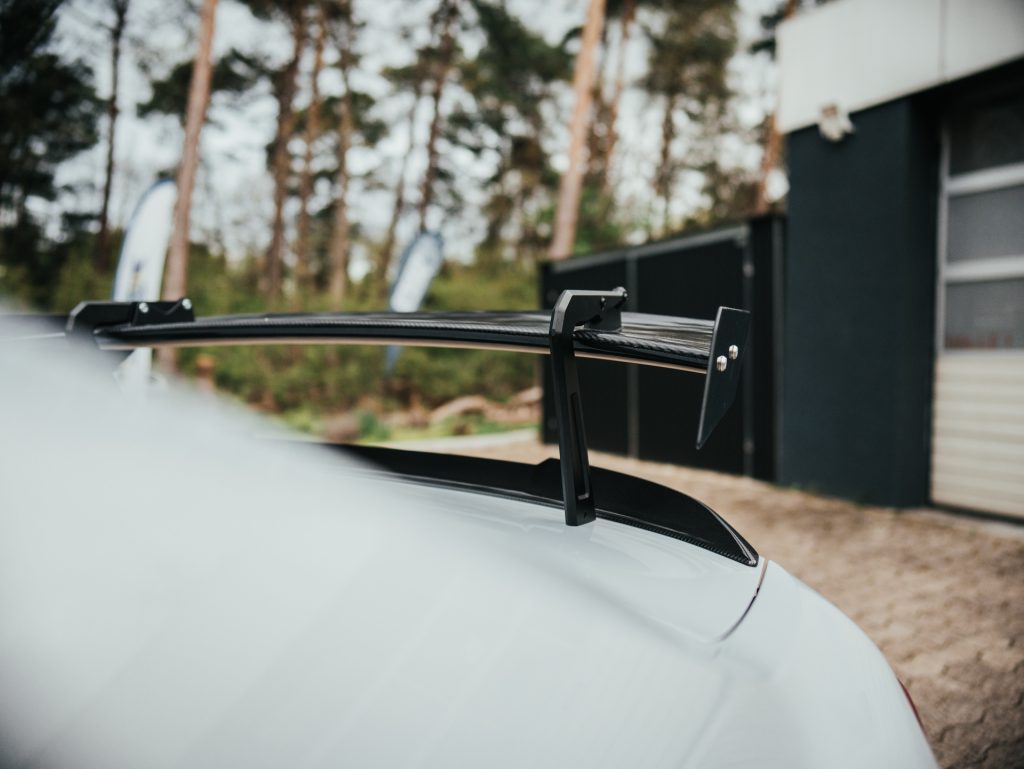
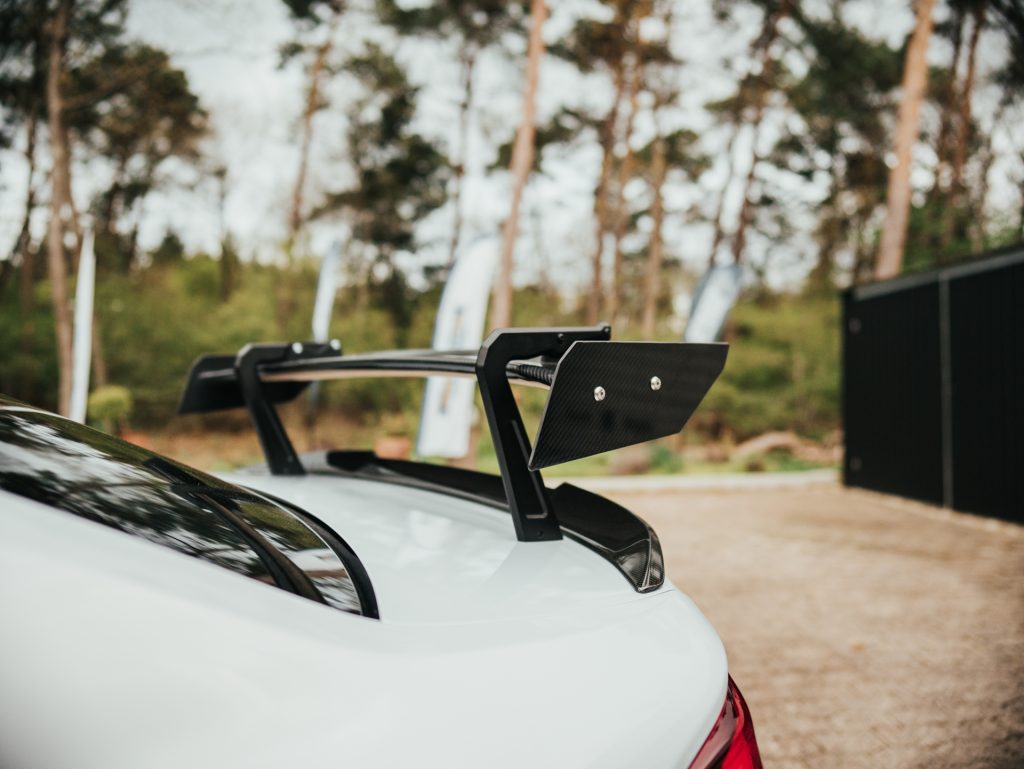
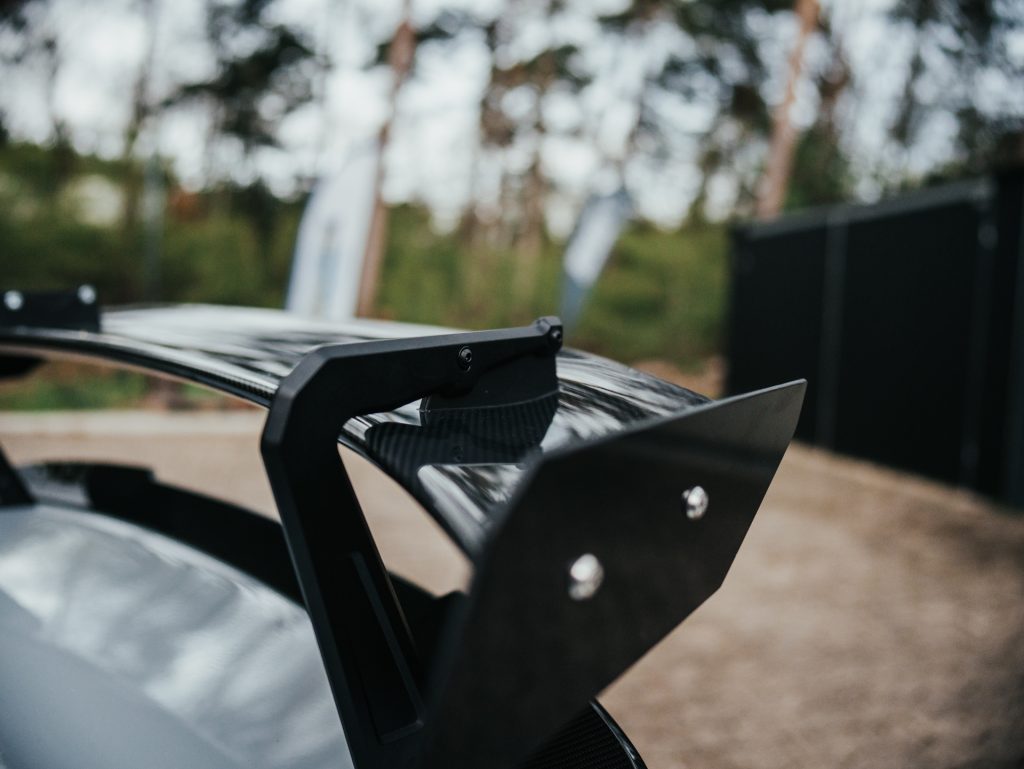
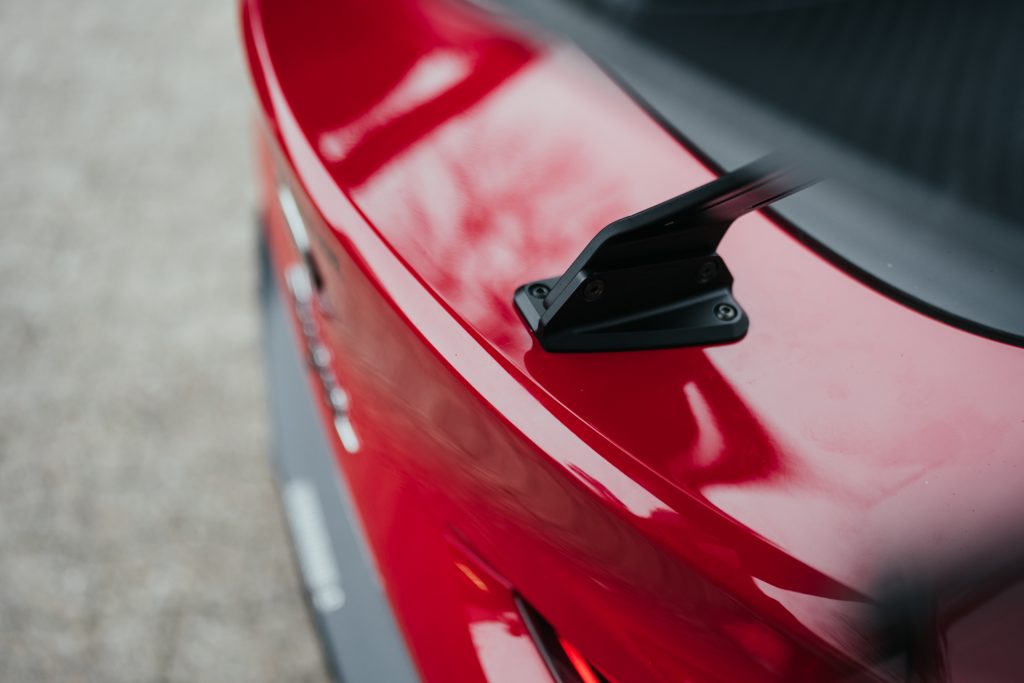
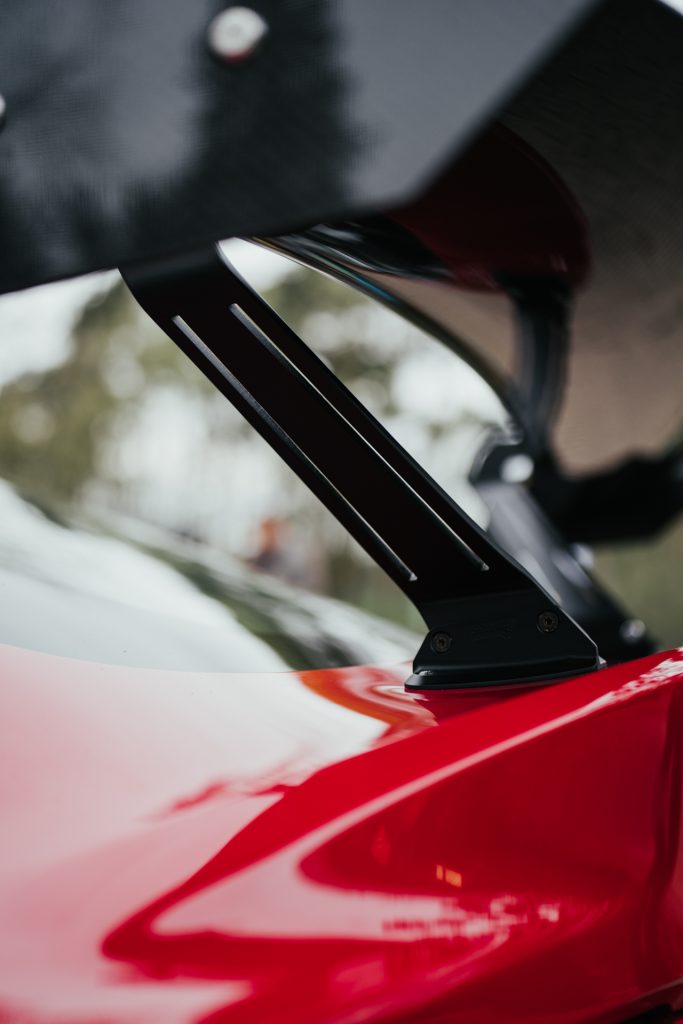
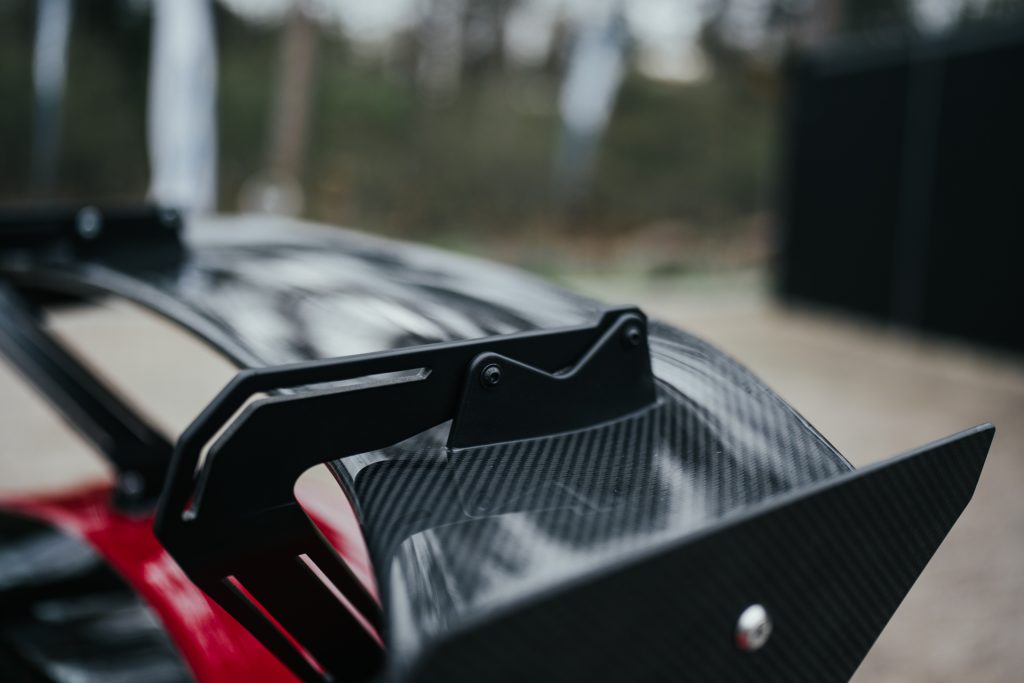

How doyou maximize the aerodynamically relevant surface area of a wing without significantly increasing drag ("driving resistance") and breaking TÜV limits in the process? - Porsche is leading the way, we are following suit: With a hanging rear wing. Pure motorsport technology transferred to your track tools.
In the area where conventional, upright wing feet are bolted to the wing blade, turbulence forms due to the attachment, which results in a loss of downforce. This is because the main aerodynamically relevant area of a rear wing is the underside and not, as is often assumed, the upper side! To compensate for this, the wing would have to be positioned much more steeply into the wind. Negative effect: Significantly more drag. The car noticeably loses speed, while the probability of a stall also increases. The result is unpredictable handling, which is not particularly conducive to chasing the last tenths.
We have therefore taken the progressive route of designing a wing blade with maximum depth, which hangs suspended on your boot lid, follows the contours of the car and does not exceed the overall width of the passenger compartment or the A-pillars (an important feature for the TÜV!). Several hours of development and dozens of driving tests on trackdays have gone into finding the perfect geometry of the wing feet, optimizing the connection to the boot lid and determining the right width of the wing blade.
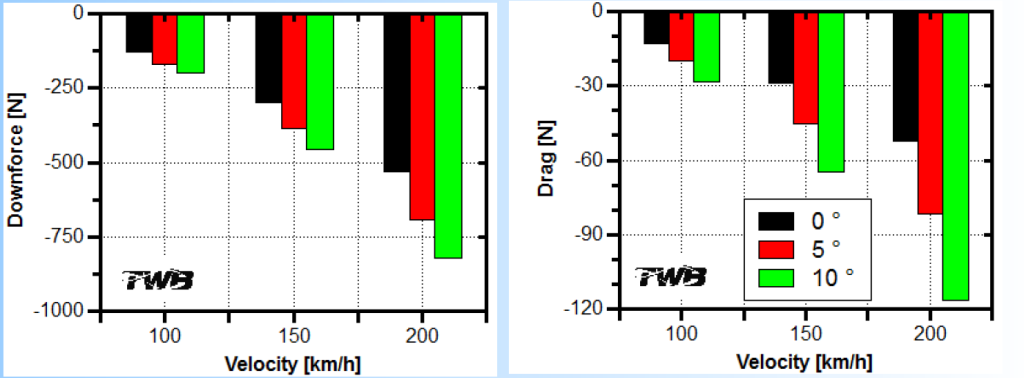
Customers came to us, described their experiences with other sashes, showed us weak points and gave us important wishes that were groundbreaking in the development of the mounting:
- It is important to find the right balance between rigidity and flexibility of the construction. A 100% rigid coupling of the components often redirects the resulting forces unfavorably, which was a difficult issue when adapting the wing to our Supra, for example. The realization: even the best wing profile is useless without an attachment designed to withstand the forces.
- We have therefore taken the following approach for the M2 and BMW 2 Series: In order to transfer the downforce generated by the wing blade to your rear axle, we supply CNC-milled aluminum feet that are adapted to the radii of the trunk lid and integrate perfectly into the rear section. Carbon molded parts as counter plates inside the boot lid ensure that the resulting forces are dissipated over as large an area as possible and that the boot lid does not warp.
- We have also thought about the installation. Save yourself the hassle of a ruined tailgate because you had to measure it by hand and drilled "on the off-chance". Thanks to the cutting template and the aforementioned carbon molded parts from below, "poking around" from above with the drill is history.
-
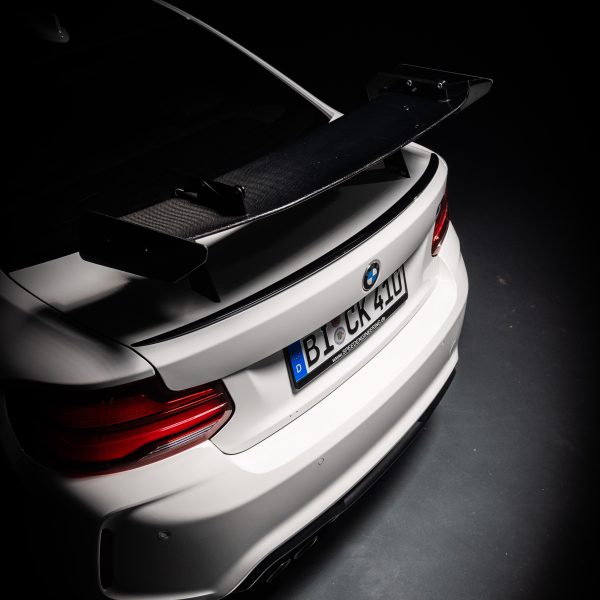 Swan Neck Heckflügel passend für BMW 2XX M2 M2C F87 F22 mit TeilegutachtenFrom: 2.180,00 €
Swan Neck Heckflügel passend für BMW 2XX M2 M2C F87 F22 mit TeilegutachtenFrom: 2.180,00 €incl. 19 % VAT.
Expected delivery time: 4-6 weeks
-
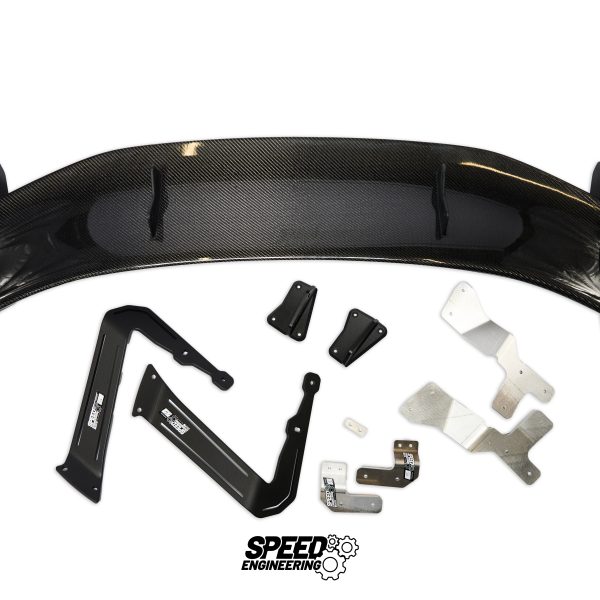 Swan Neck Wing Heckflügel passend für Toyota Supra MK5 A90 mit TeilegutachtenFrom: 2.150,00 €
Swan Neck Wing Heckflügel passend für Toyota Supra MK5 A90 mit TeilegutachtenFrom: 2.150,00 €incl. 19 % VAT.
Expected delivery time: 4-6 weeks



